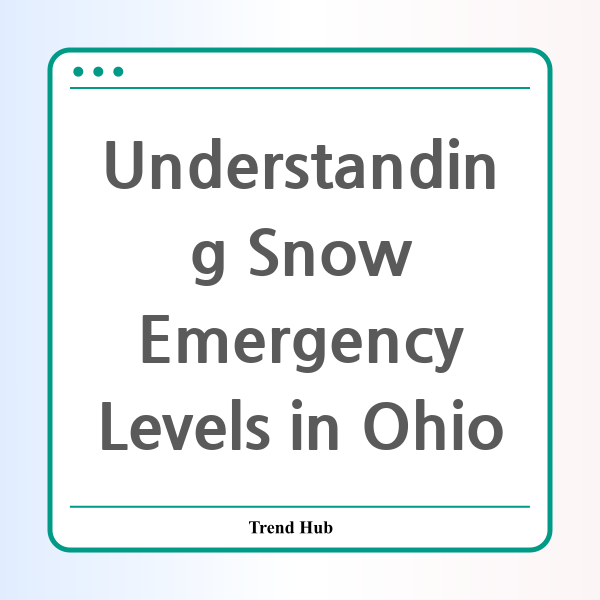* This website participates in the Amazon Affiliate Program and earns from qualifying purchases.

Will You Be Prepared for Ohio's Snow Emergencies?
As winter takes hold and snow begins to blanket Ohio, understanding snow emergency levels becomes essential for all residents. Recently, central and northeast Ohio faced significant snow accumulation, leading to varying levels of emergency advisories. This article will break down what these snow emergency levels mean, what to expect during severe winter weather, and how to stay safe while navigating these conditions.
What Are Snow Emergency Levels?
The Ohio Committee for Severe Weather Awareness has classified snow emergencies into three distinct levels. Each level signifies the severity of the road conditions, guiding motorists on how to proceed during adverse weather. Here’s a breakdown of each classification:
- Level 1: Roadways become hazardous due to blowing and drifting snow, potentially leading to icy conditions. Motorists are urged to drive with caution.
- Level 2: Conditions worsen, with roads remaining hazardous. Only those who urgently need to travel should be on the roadways. It's advised to check with employers about reporting to work.
- Level 3: All non-emergency personnel are prohibited from driving on roadways. Travel is only permitted if absolutely necessary; failure to comply may lead to legal repercussions.
Current State of Snow Emergencies in Ohio
As of Sunday, February 16, central Ohio experienced extensive snow showers, prompting a Winter Weather Advisory that extends through the evening. Counties such as Delaware were included in a Level 1 emergency, while others faced Level 2 advisories. In northeast Ohio, counties were similarly affected, with winter storm warnings initiated for areas like Cuyahoga and Lake.
Conditions to Anticipate
With temperatures set to drop significantly as arctic air sweeps across the region, we can anticipate icy roadways and reduced visibility. Snow accumulation rates could reach one inch per hour, contributing to treacherous driving conditions. It is crucial for individuals to remain informed and to monitor local weather updates to ensure their safety during these winter storms.
Staying Safe During Snow Emergencies
Here are some tips to navigate through periods of snow emergencies safely:
- Stay Updated: Regularly check weather alerts and forecasts to stay ahead of changing conditions.
- Avoid Unnecessary Travel: If you’re under a Level 2 or Level 3 emergency, consider staying home unless absolutely necessary.
- Contact Your Employer: Ensure you have confirmation from your workplace if you are expected to report during adverse conditions.
- Be Prepared: Equip your vehicle with emergency supplies, such as a first aid kit, blankets, and non-perishable snacks, in case travel becomes unavoidable.
Conclusion
Winter weather can change quickly, and being prepared is key to staying safe. Snow emergency levels are designed to inform and protect the public during harsh conditions. By practicing caution and staying informed, you can navigate these winter months more safely. Always remember to check your local forecasts and adhere to emergency classifications when planning your travel. Stay safe out there, Ohio!
* This website participates in the Amazon Affiliate Program and earns from qualifying purchases.